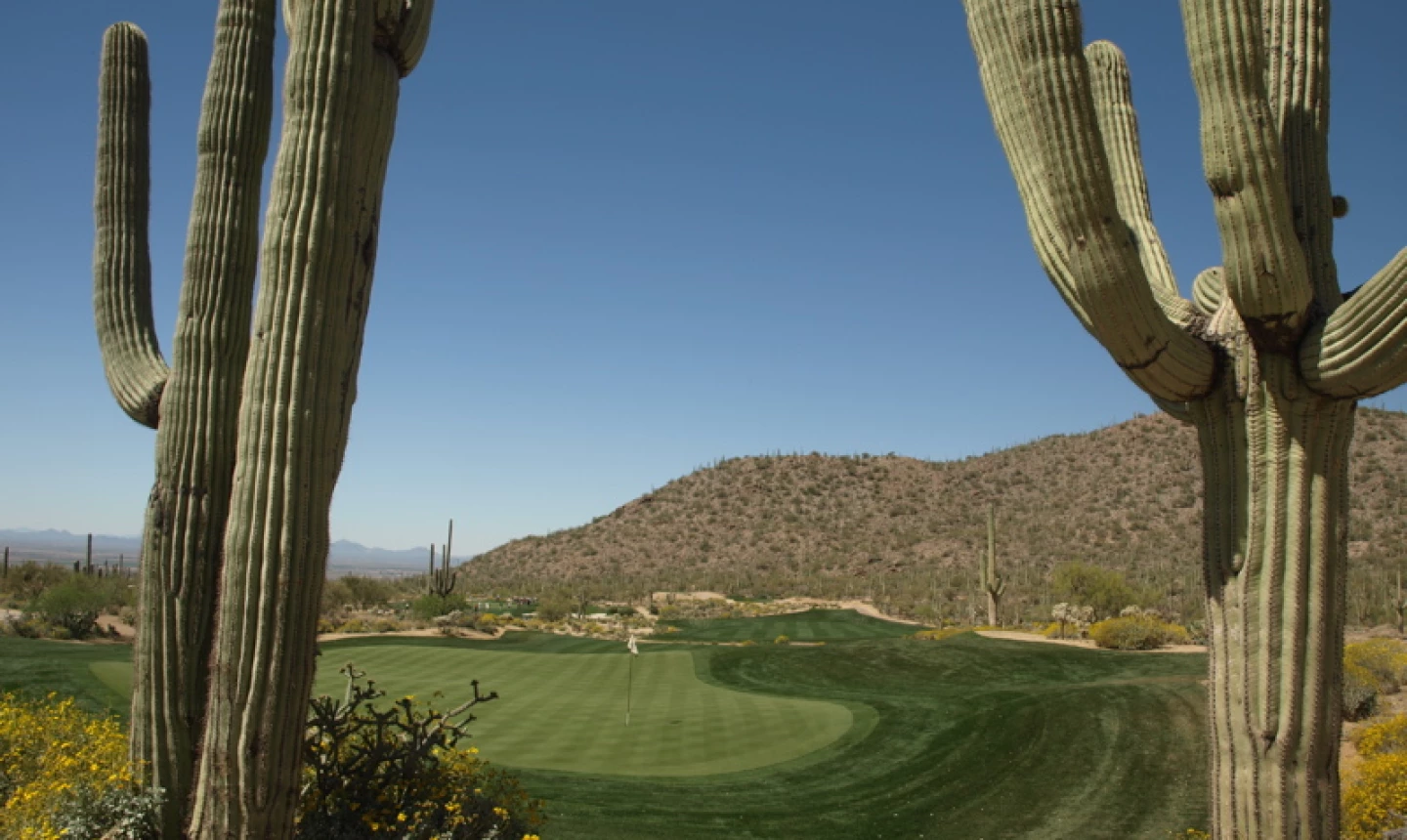TUCSON, Ariz. -- La Paloma Country Club and The Ritz-Carlton Golf Club, Dove Mountain, home of the Accenture Match Play Championship, have a few things in common.
They're both in northeast Tucson, separated by a 30-minute drive.
They're both desert golf courses.
They're both in superb shape.
And they're both Jack Nicklaus designs.
But that's where the similarities end.
Twenty-five years went by from the time Nicklaus constructed La Paloma (1984) to the opening of Dove Mountain (2009). His maturation as a course designer is evident in the evolution of his designs.
Long irons key to success at La Paloma
Let's start with La Paloma.
Nicklaus, as any ardent golf fan knows, was a terrific long iron player. In fact, it may have been his best attribute. So it's not surprising that many of Nicklaus' early designs, including La Paloma, require precise long-iron play.
La Paloma has three nine-hole courses, the Canyon, Hill and Ridge. They all feature narrow fairways, elevated greens and forced carries, particularly on long par 3s. It's as if Nicklaus thought every golfer could -- or should -- be able to stripe a 2-iron.
Take the two par 3s on the Hill Course. The fourth hole is 185 yards, and at least 180 yards are all carry. Even worse, the drop-off is completely vertical. Hit a drive 178 yards, and it's lost in the desert. The same goes for No. 8, a 157-yard hole without a safe landing area. There's no bump-and-run option; golfers have to hit high and accurate shots, a Nicklaus trademark.
But Dove Mountain, which also has three nine-hole courses, is an example of Nicklaus thinking more about the average golfer than the low-handicapper.
Yes, 18 holes of play can be ridiculously long -- more than 7,700 yards from the tips -- but unlike La Paloma, the fairways at Dove Mountain are wide and welcoming. Nicklaus also cut down on the number of long, forced carry shots.
The par-3 holes at Dove Mountain are a perfect example of how he changed over the years. There are six par 3s on the property, and five of them are at least 200 yards -- with the longest measuring 253 yards. But Nicklaus gave golfers an out with either a safe area in front of the green or on either side of the green. At La Paloma, there is no safe haven.
Dove Mountain demands stellar sand play, short game
What Nicklaus did at Dove Mountain was put the emphasis on sand play and the short game. Cavernous bunkers are commonplace at Dove Mountain, both on the fairway and around the greens.
But it's those greens that distinguish Dove Mountain from La Paloma.
La Paloma's greens, while elevated, are soft and generally forgiving in their undulation and breaks. Not so at Dove Mountain. One player, after four-putting for a second time, called the greens "diabolical."
In designing Dove Mountain, Nicklaus seemed to understand that golf technology was taking the bite out of courses, even at more than 7,700 yards from the tips. So he fought back the only way he could -- by making the greens unbelievably difficult to putt.
To say Dove Mountain's greens break a lot is like saying Rush Limbaugh leans a little to the right. Dramatic ridges often run through the middle of the greens, turning even 5-foot putts into an adventure.
The growth of golf in the Tucson area
The differences between La Paloma and Dove Mountain also illustrate the growth of golf in the Tucson area. Tucson National hosted the Tucson Open for years, but the course was little more than a birdie festival for PGA Tour pros. In 1975, Johnny Miller won the tournament by shooting 61 in the final round.
Simply put, Tucson didn't have a course that could host a tournament with the magnitude of the Accenture Match Play Championship. But that all changed with the opening of Dove Mountain. It was further evidence that the Tucson golf scene was growing up -- and that over 25 years, Nicklaus the designer had evolved as well.















